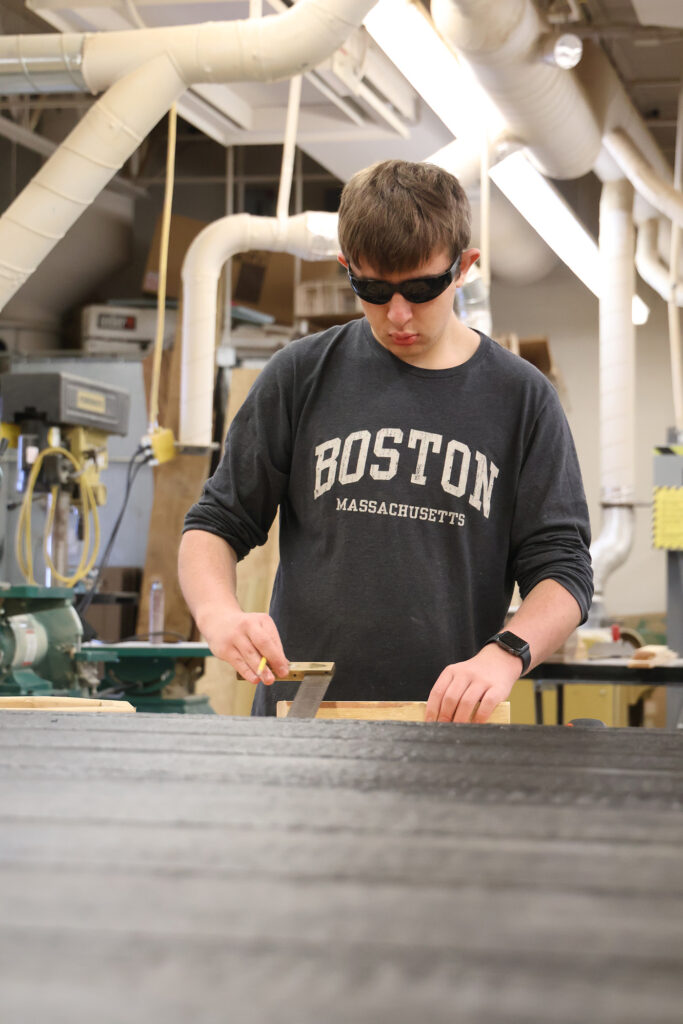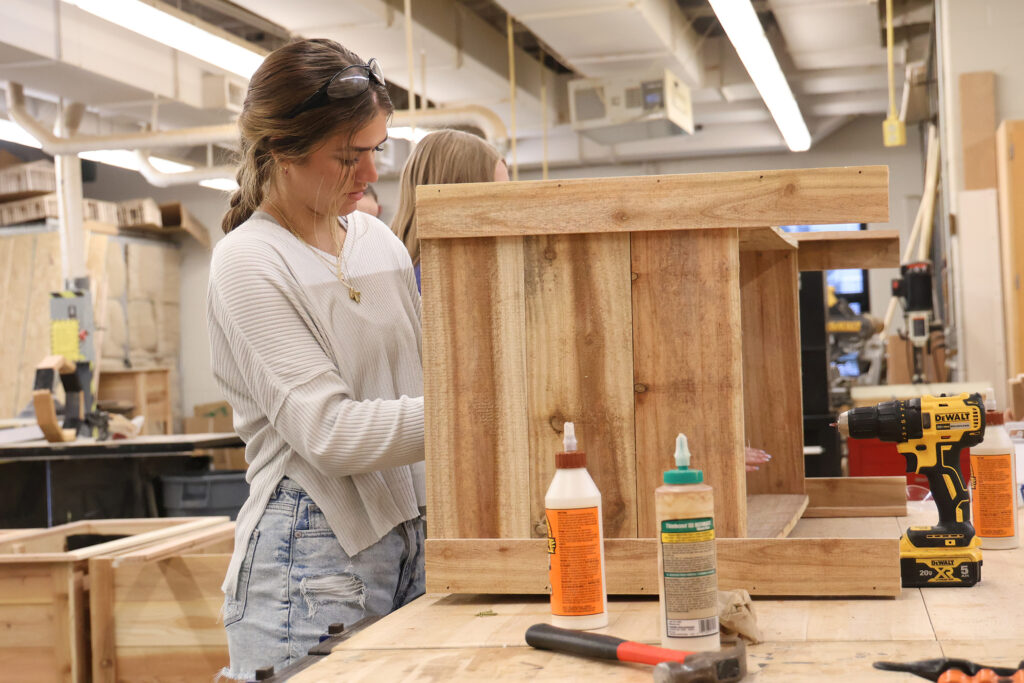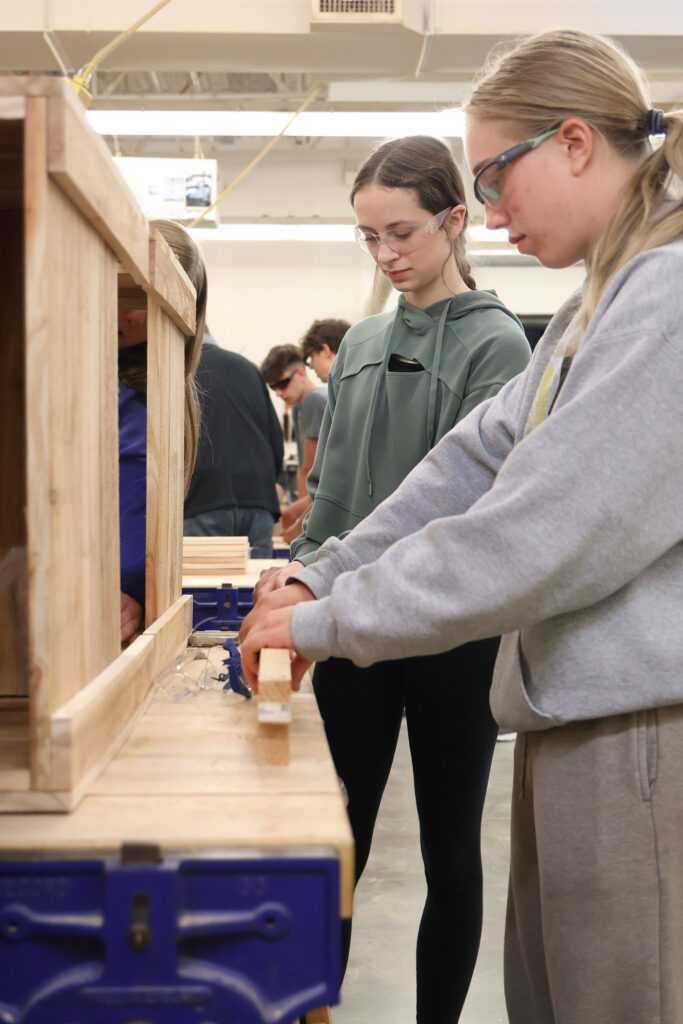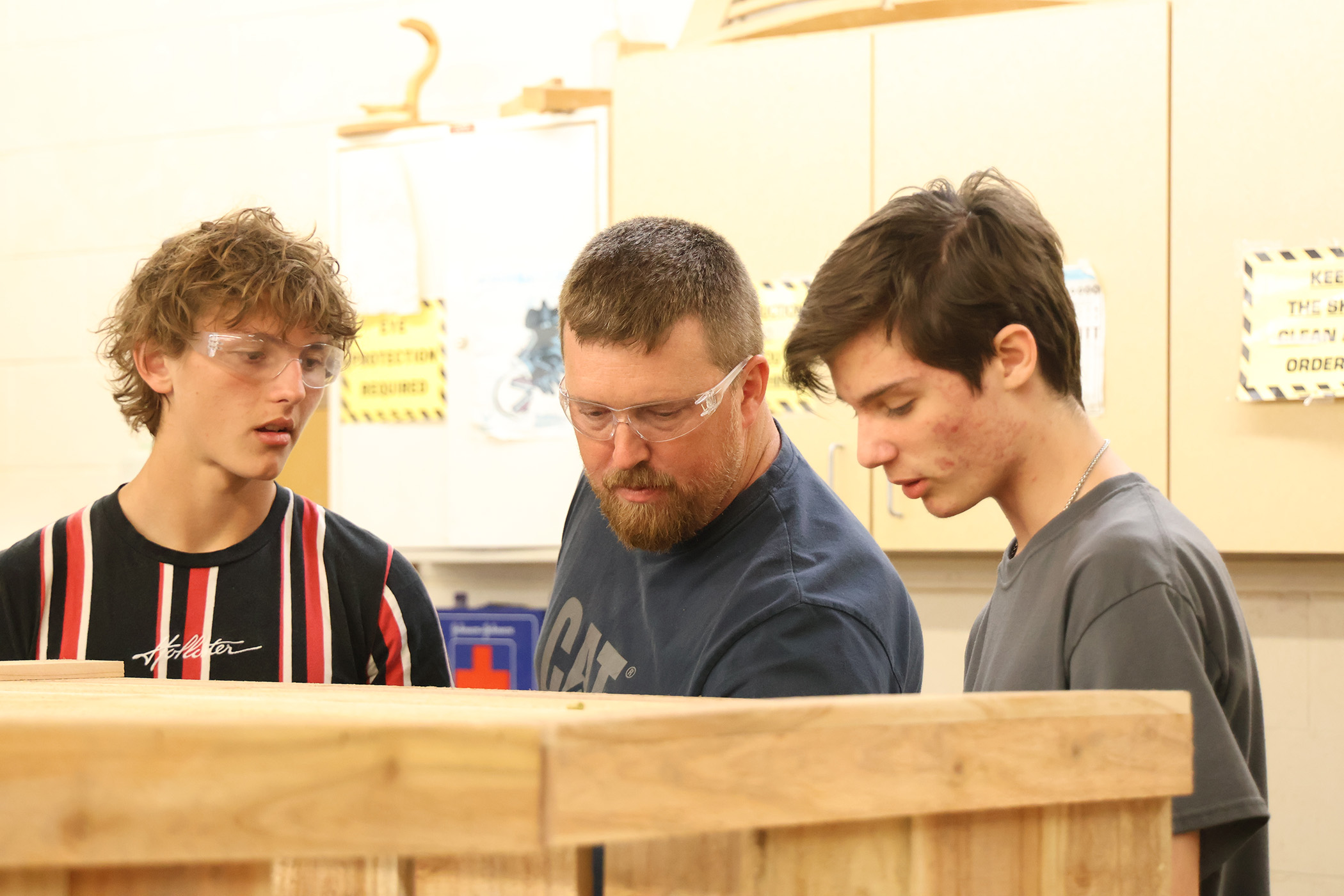By Lauren Watkins
The high school classroom, filled with sawdust and construction tools, hardly resembled a typical geometry learning environment. Students were busy making planter boxes to sell in a fundraiser to earn the supplies they needed to build a storage shed.
The 25 students enrolled in instructor Cole Hurley’s construction class kept busy trimming wood and nailing planks together, using the math skills they had been learning in Jesse Herrmann’s geometry class.
In this dual-credit course, students at Andover Central High School don’t solely learn math; they also put their knowledge to the test, directly applying the concepts they learn in geometry to construction.

Herrmann has taught math at Andover Central for the last 29 years and has been teaching the Geometry in Construction course since it started in 2020. Hurley has taught construction at the school for the last two years. Prior to teaching, he ran a sheet metal business he still owns.
“Kids always say, ‘When am I going to use this?’ when it comes to math, and I use it every single day in the projects I am making and in construction outside of school,” Hurley said.
Learning in a classroom and listening to lectures are still part of this course, but applying math to geometry and building and establishing a connection between the subjects makes learning more enjoyable and comprehensible for these Andover Central students.
“A lot of teachers haven’t been able to word math in a way I can understand it,” said Kyle, a student who was enrolled in the spring 2025 course. “Herrmann has done a really good job, and Hurley helps you get things done.”
Being able to personalize learning for students who are struggling in math, and even for students who are excelling in it, is a step in the right direction that benefits all students.
“For the student who doesn’t necessarily like math or has struggled with math in the past,” Herrmann said, “this is a new and fresh approach for them.”
Showing students how math is applicable in the real world can be key to keeping them engaged in their learning. But this course is not only about the geometry; it also teaches students basic handyman abilities and gives them skills for the workforce.
“I wanted the experiences of not just what we learn in geometry but applying them to real life and things I could do in the future, and now I have the capabilities,” said McKenna, another Geometry in Construction student.

Over the years, the students have built a variety of projects, such as a deer blind, two sheds, a chicken coop, a playhouse, and even beds. Herrmann and Hurley’s end goal is to make a much bigger project: a house. While that will take longer to build than a planter box, they have no shortage of help; the course is popular among Andover Central students.
“I get told by teachers and students that this is the best class offered in school,” Hurley said.
Students interested in the course don’t need to have construction experience to gain value from the class.
“The students have never had to hammer a nail before joining the class,” Hurley said. “One of our first lessons is on how to use a tape measure.”
The instructors said the curriculum generally seems to help students who have struggled in previous math classes improve their math grades.
“I follow up with my juniors who have taken this class, and for the most part, they are all doing very well, so we are hitting all the objectives, and the students are getting what they need,” Herrmann said.
Students said the class increases their fondness for not only geometry but also building.
“I had a parent reach out to me and say, ‘My kid has never touched a hammer, and now all they do is come home and talk about what they’ve built and how excited they were that they actually built something themselves,’” Hurley said.
Herrman has observed the same.
“[The course] also very well services the students who are good at math and maybe haven’t done anything in construction,” Herrman said. “I think they are eager to learn how math applies to the construction aspect.”

Hands-on learning can help students make true connections.
“I do think this class is beneficial and worth it because some students aren’t the best with having to do scenarios in their head,” said Kyle. “They can do a whole lot better when they can work on something with their hands in real-world situations.”
Herrmann and Hurley both said that sometimes there is a better way for students to learn new skills than through a lecture. Through the construction application, students discover how math can impact people’s lives.
“You can use this to help people,” Herrmann said. “Last year, we helped an organization called Sleep in Heavenly Peace, where we built beds to service people who needed them.”
The Geometry in Construction course originated at a high school in Loveland, Colorado, where teachers realized the geometry course they had was not meeting the needs of all students. Once Herrmann learned about the course idea, he knew he wanted to implement it at Andover Central.
Observing the class come to life and seeing students create useful items has been thrilling for the instructors.
“We have a 12-foot by 14-foot shed that the students framed up, sided, put trim on it, caulked it, and painted it,” Hurley said. “I taught the kids how to put a roof on, so now it has a metal roof.”
Successfully creating large-scale projects like this can help kids build self-esteem.
“Seeing the kids progress in their skills and their confidence is the best part of it,” Hurley said.

